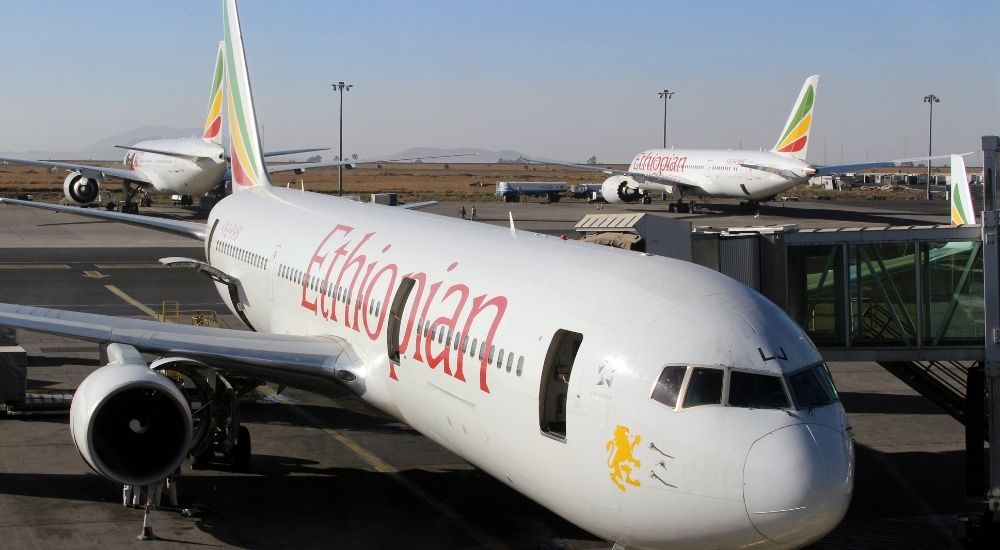How digital transformation is impacting air transportation and contactless air travel

Before the pandemic, passenger travel was at a high, with around 9 billion people traveling every year. That number was expected to double by 2040. With the number of air traffic movements increasing steadily, congestion in the airports and airspace was becoming a growing concern.
The biggest challenge was how to meet the increasing demand while maintaining safety and providing greater visibility and insight to airport operations. To tackle these challenges, airports have accelerated their master plan initiatives like CapEx-intensive expansion plans or using advanced technology to create capacity.
Over the last few years, we have seen a rising demand for technologies that can integrate systems across Airport Operations like Airside, Terminal or Landside. By integrating everything from Airfield Ground Lighting, to Gate Turnaround, Tower and Core Terminal Airport subsystems, you can get far better oversight of airport operations, to optimise turnarounds and get more aircraft movements per hour.
Over the long-term, these kinds of technologies are going to be critical to supporting the growing demand for regional and pan-continental air travel.
Digital transformation
Before the pandemic there was focus on digital transformation to improve airport operations, and in the medium and longer term we expect this trend to continue and indeed accelerate, with a greater emphasis on safety and security.
We also see self-service becoming an important element of transformation to ensure that the passenger is in control throughout their journey, inside the airport or at off-airport premises. Aspects such as online check-in, bag self-tagging and dropping and virtual queuing, will enable airports to operate more effectively in a two-meter economy.
As the industry looks to return to the new normal, there is opportunity for change, and this is where we see the potential to usher in a new age of sustainability. Of course, this rests on the aviation industry’s various approaches to profitability and cost control. Investment in digitalisation and automation can help drive more efficiencies which in turn can help achieve sustainability goals.
Smart building management has a huge role to play here too, and as connectivity and infrastructure develop with 5G, combined with emerging technologies that harness the power of things like Big Data and Machine Learning, the ability to optimise operations to reduce energy consumption, while continuing to meet business goals, is only going to increase.

For instance, adding core airport data information such as real-time flight arrival time or gate allocation changes to an intelligent and connected building management system can enable airport operators to optimise their energy usage.
Pandemic hit
Now more than ever, extra measures and precautions are being taken to improve the well-being and security of airport staff and passengers. Industry bodies such as the International Air Transport Association and the International Civil Aviation Organisation have issued guidelines and recommendations on improving safety and security in airports, which need to be complied with.
As the industry focuses on to return to flying, the challenge now is how to efficiently move disparate volumes of people through the terminal safely, complying to social distancing norms, maintaining rigorous cleaning processes, and ensuring air quality while at the same time keep waiting and transit times to reasonable levels.
To successfully tackle these, airport security and operations teams need to be properly equipped to reduce the risk of infection at each stage of the passenger journey. They need to have situational awareness in all spaces of the airport, from curb to gate, as well as early detection of potential risks associated with people and property.
In response to Covid-19 there are three things airport operators and their airline partners want to focus on – maximising the safety of their customers and staff, maintaining regulatory and standards compliance, and ensuring business continuity.
Technology has an important role to play with all three of these priorities, from control systems to monitor terminal throughput and avoid congestion, to air quality management systems, and other intelligent building management solutions that can keep the airport operation running in the event of an alert.
In response, we recently launched our Healthier and Safer Airports’ solutions, part of Honeywell’s Healthy Buildings portfolio, which includes a range of technologies to support airports as they resume operations and work to reassure their customers.
For example, to help improve surface cleaning and ensure fresh air circulation in terminals we have created new solutions that enhance ventilation and temperature controls, manage humidity, pressurisation, filtration, as well as ultraviolet solutions to mitigate contagion risk.
On the safety and security side, we have technologies that can be used for people counting, managing the flow of passengers, temperature screening as well as frictionless access control. Through deep learning and artificial intelligence-based video analytics, it is possible to use existing cameras and see if passengers are complying with social distancing guidelines and wearing face masks to protect themselves and others.
We have developed these solutions with integration in mind, so that whether they are being installed at the design and planning stage, or being retrofitted into an existing architecture, they can integrate seamlessly with existing systems in the terminal.
Airport solutions

Honeywell is working across its businesses to quickly develop solutions that support critical sectors, like air travel, recover. We are working with customers to implement holistic approaches and solutions that support safer, more efficient and more secure terminal operations whilst restoring passenger confidence. Our Healthy Buildings solutions for airports enable this, as they are fully integrated with air quality, health, safety and security controls, backed by expert services.
The solutions enable safer terminals by improving air quality, conducting thermal screening, people counting, frictionless access and PPE compliance checks using video analytics, minimising risk of exposure and choke points. This can also centrally monitor and secure all areas of the airport terminal including baggage handling and parking, among others.
From curbside to airside, we are making it easier for passengers to flow through an airport and can help generate insights into how people can be supported and reassured in an airport environment. As the industry looks toward recovery from the impact of Covid-19 we will see technologies like these play a central role in giving people the confidence they need to get back into the air, and operators the intelligence they need to capitalise on growth.
Key takeaways
- Airports have accelerated initiatives like Capex-intensive expansion plans or using advanced technology to create capacity.
- We have seen rising demand for technologies that can integrate systems across airport operations
- By integrating everything you can get better oversight of airport operations and more aircraft movements per hour.
- In the medium and longer term we expect this trend to continue and accelerate with emphasis on safety and security.
- We see self-service becoming an important element of transformation to ensure the passenger is in control throughout their journey
- Online check-in, bag self-tagging and dropping, virtual queuing, will enable airports to operate more effectively.
- As the industry focuses on return to flying, the challenge is how to move volumes of people through the terminal safely.
- Ensuring air quality while at the same time keep waiting and transit times to reasonable levels.
- Technology has an important role to play to keep the airport operation running in the event of an alert.
Airports are facing a double whammy, prepare for the inevitable volume surge of passengers, at the same time create a contactless secure journey.





